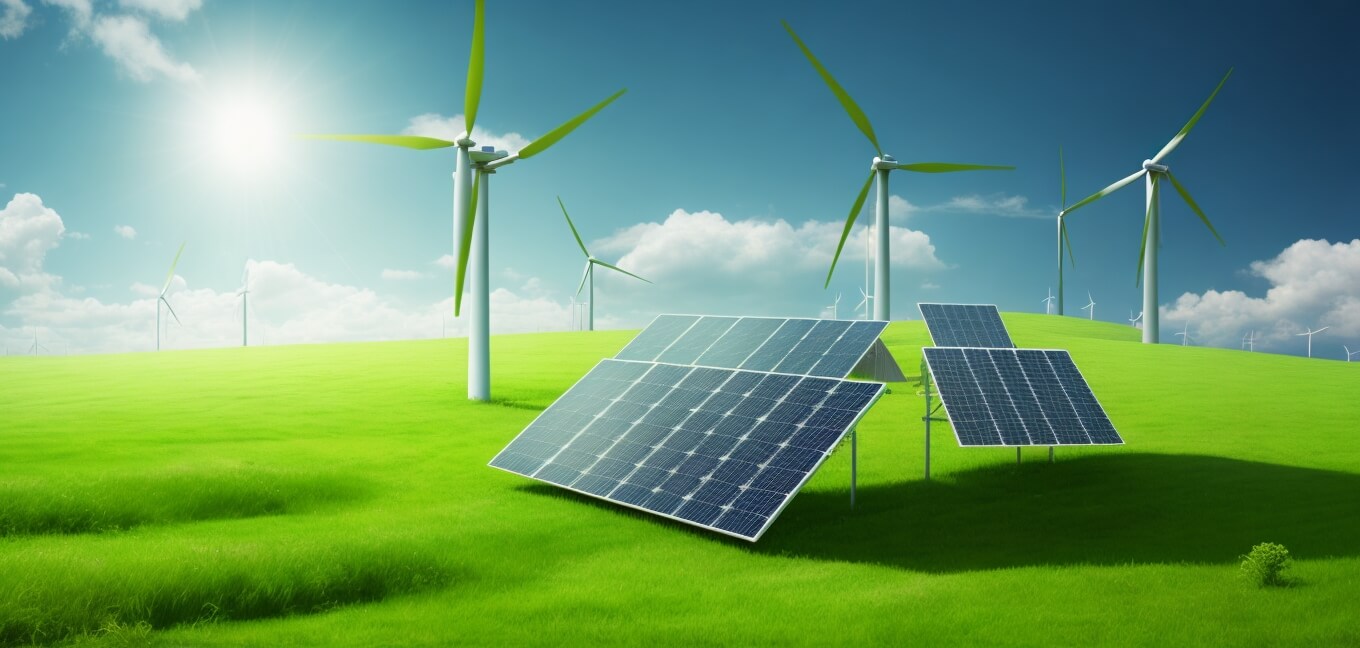
In our quest for a sustainable and greener future, the world has turned its attention towards renewable energy sources like wind, solar, and hydropower. These sources are paving the way for a cleaner environment and reduced reliance on fossil fuels. But what often goes unnoticed is the critical role played by metal and plastic components in the green energy infrastructure.
The Metal Backbone
Wind Turbines
Wind turbines are iconic emblems of the green energy revolution. These towering giants harness the power of the wind to generate electricity, and at the heart of their functionality lie metal components. These vital pieces, such as the tower, blades, and gearbox, are predominantly crafted from robust materials like steel and other metals.
The tower, typically reaching impressive heights, serves as the turbine’s backbone. Its metal structure ensures stability and resilience, allowing the turbine to withstand the forces of nature, from gusty winds to severe weather conditions.
The blades of a wind turbine are its workhorses, capturing the kinetic energy of the wind. Crafted from durable metals, they are aerodynamically designed to efficiently convert wind force into rotational energy. These metal blades play a crucial role in maximizing energy output while enduring the rigors of constant motion.
The gearbox, concealed within the turbine’s nacelle, is another essential metal component. It facilitates the conversion of slow, high-torque rotation from the blades into faster, lower-torque rotation that powers the generator, ultimately producing electricity.
Solar Panels
Solar panels are a fundamental pillar of renewable energy, capturing sunlight and transforming it into electricity. Within these panels, metal components, particularly aluminum frames and mounts, play a crucial role in ensuring their long-lasting performance and resilience against the elements.
Aluminum frames encase and protect the delicate photovoltaic cells within the solar panels. This robust framing not only provides structural support but also safeguards the cells from physical damage and environmental factors. It allows the panels to endure the test of time, ensuring they continue to generate electricity efficiently for decades.
Mounting systems, often made of aluminum, secure the solar panels to rooftops or ground installations. These mounts not only ensure the optimal orientation and tilt angle for sunlight absorption but also keep the panels firmly in place, even in challenging weather conditions. This stability is essential for maximizing energy production and protecting the panels from wind, rain, and other environmental stressors.
Hydropower
Hydropower, a clean and eco-friendly energy source harnessed from the flow of water, relies heavily on the pivotal role played by metal components. These components, including turbines and generators, are the unsung heroes in the transformation of the kinetic energy of water into a potent source of electrical power.
Turbines, often crafted from robust metals like steel, are strategically placed within the flowing water. As the water rushes past, the turbines capture its kinetic energy, causing them to spin. This rotational motion is a vital part of the energy conversion process, as it drives the generation of electricity.
Generators, another critical component, work hand in hand with turbines. As the turbines rotate, they transfer mechanical energy to the generators. These generators, also predominantly composed of metal, convert this mechanical energy into electrical power through the principles of electromagnetic induction.
Energy Storage
Efficient energy storage systems are the linchpin of making renewable energy sources dependable. In this quest for reliability, metal batteries, and capacitors have emerged as indispensable components, ensuring excess energy generated on sunny or windy days can be stored for later use when conditions are less favorable.
Metal batteries, with their ability to store large amounts of energy, are at the forefront of this innovation. They employ metals like lithium, cobalt, and nickel to store electrical energy chemically. When renewable energy production exceeds demand, these batteries soak up the surplus power, ready to release it when the sun sets or the wind calms, ensuring a continuous power supply.
Capacitors, another critical player in energy storage, excel in rapid energy discharge. They are especially useful for short-term energy needs and are frequently employed alongside batteries to provide quick bursts of power. Metal components within capacitors help store and release electrical energy efficiently, contributing to the overall effectiveness of energy storage systems.
This pairing of metal batteries and capacitors is revolutionizing the renewable energy landscape. It not only ensures a consistent energy supply but also reduces waste by capturing excess green energy that might otherwise go unused. As we increasingly rely on renewable energy sources, the importance of these metal-based energy storage systems cannot be overstated, helping us move closer to a sustainable and reliable energy future.
The Plastic Revolution
Solar Energy
Plastics have made significant inroads in the solar energy sector. Solar panels now often incorporate lightweight plastic materials, reducing manufacturing costs and making them easier to transport and install.
Wind Turbines
Plastics have found a surprising application in wind turbines. They are used to reinforce the blades, making them both lightweight and durable. This innovation enhances the efficiency of energy capture and reduces maintenance costs.
Hydropower
In hydropower plants, plastics are employed in fish-friendly turbine designs. These innovative components help reduce the impact on aquatic ecosystems by preventing fish from being trapped or injured during their migration.
Energy Storage
Plastics are also making their presence felt in energy storage. They are used in the insulation of electrical components, enhancing safety and preventing short circuits in batteries and capacitors.
The Synergy of Metal and Plastic
While metals and plastics each have their unique roles, they often collaborate in the quest for sustainable energy solutions.
Metal and plastic components are lightweight, making transportation and installation more energy-efficient. This results in a reduced carbon footprint throughout the lifecycle of renewable energy systems.
The combination of metals’ strength and plastics’ flexibility results in a more durable and resilient energy infrastructure. This not only reduces maintenance costs but also extends the lifespan of renewable energy systems.
The synergy between these materials has led to innovative designs that improve the overall efficiency of green energy systems. For example, the use of composites in wind turbine blades has led to quieter and more efficient turbines.
The cost-effectiveness of using metal and plastic components has made green energy more economically viable. This, in turn, encourages further investment in renewable energy projects.

